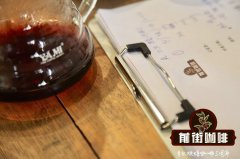Are Cuban coffee beans expensive? Characteristics and flavors of Cuban Coffee

For information, please follow the coffee workshop (Wechat official account cafe_style)
In 1748, coffee was introduced into Cuba and quickly became a habit and a daily life with deep social and cultural connotations. Cuba has fertile land, a subtropical climate, humid climate and abundant Rain Water, with mountains between 350m and 750m above sea level and an average temperature of 23-28 degrees. It is a natural treasure land for coffee cultivation. The suitable natural conditions provide a favorable natural environment for the growth of coffee trees, and coffee has become a major economic industry in Cuba.
The most famous coffee beans in the world are in the Blue Mountains of Jamaica, while Cuba, which is located next to Jamaica, is not as famous as Jamaica, Guatemala, ⋯⋯and other places, but it is suitable for growing coffee beans in the climate, and affected by the culture of Western Europe and the United States, Cuban coffee has become a drink in the daily life of Cubans.
Due to declining production, the Cuban government in 1962 rationed 4 ounces of coffee per person per month, resulting in the emergence of alternatives to coffee, such as chickpea coffee. "this is a coffee substitute with a mixture of coffee and roasted chickpea powder so that more people can drink more coffee." Goldenberg said. At the local caf é con ch í charo, the barista made him a cup of hummus coffee with a strong, rough and slightly bitter taste. Because the taste is too bad, the local people are used to adding a lot of sugar to the coffee. Chickpea coffee is very common in local rationing stores. Of course, you can also go to a normal store to buy normal coffee, but given the local people's income of $20 a month, coffee is definitely a luxury for most people. Due to the limited amount of coffee, people in Havana drink coffee from very small cups, and the amount of coffee per cup is very small.
Cuban Crystal Mountain Coffee is a typical island bean, taste clean, delicate, slightly sour but not exciting taste, with a special sweet flavor, very charming.
The planting area of Cuban coffee is divided into three parts, which are planted on the slopes and valleys above sea level from 1000 to 2000 meters above sea level, with the largest proportion of Santiago de Cuba and Granma in the east accounting for 70% of the country, followed by the central villa Clara and Sancti Spiritus accounting for 20%, and the western Pinar del Rio accounting for 10%. These areas provide a quite comfortable growing environment for coffee beans, with an average temperature of 21 degrees in winter and 25 degrees in summer. The rainfall is moderate, the humidity is evenly distributed all the year round, and the soil is deep and fertile. All planted Arabica (Arabica) varieties, to Tibica (Typica). In 2000, the United Nations Educational, Scientific and Cultural Organization (UNESCO) listed two coffee producing areas, Santiago and Guantanamo, as World Heritage sites.
Important Notice :
前街咖啡 FrontStreet Coffee has moved to new addredd:
FrontStreet Coffee Address: 315,Donghua East Road,GuangZhou
Tel:020 38364473
- Prev

The origin of Bali Kopi Luwak, the world's most expensive coffee-Kopi Luwak
For information, please follow the coffee workshop (Wechat official account cafe_style) Indonesia Manning and Java coffee are famous all over the world, many people do not know that Bali itself also produces coffee. Bali coffee trees mostly grow in the north-central mountains at an altitude of 1000-2000 meters above sea level. Because the area is cool and foggy, it is suitable for coffee trees. Bali gold caffeine arises at the historic moment, with an average of 800m a year.
- Next

Palo Blanco Manor Coffee, Guatemala how is the coffee graded in Guatemala?
Professional coffee knowledge exchange more coffee bean information Please follow Coffee Workshop (Wechat official account cafe_style) the earliest literature points out that Guatemala knew how to grow and drink coffee as early as 1747, and with the establishment of the Coffee cultivation and Promotion Committee in 1845, coffee became an important cash crop in the region. With the vigorous promotion of the government, coffee accounted for the total number of people in Guatemala in 1880.
Related
- Does Rose Summer choose Blue, Green or Red? Detailed explanation of Rose Summer Coffee plots and Classification in Panamanian Jade Manor
- What is the difference between the origin, producing area, processing plant, cooperative and manor of coffee beans?
- How fine does the espresso powder fit? how to grind the espresso?
- Sca coffee roasting degree color card coffee roasting degree 8 roasting color values what do you mean?
- The practice of lattes: how to make lattes at home
- Introduction to Indonesian Fine Coffee beans-- Java Coffee producing area of Indonesian Arabica Coffee
- How much will the flavor of light and medium roasted rose summer be expressed? What baking level is rose summer suitable for?
- Introduction to the characteristics of washing, sun-drying or wet-planing coffee commonly used in Mantenin, Indonesia
- Price characteristics of Arabica Coffee Bean Starbucks introduction to Manning Coffee Bean Taste producing area Variety Manor
- What is the authentic Yega flavor? What are the flavor characteristics of the really excellent Yejasuffi coffee beans?

